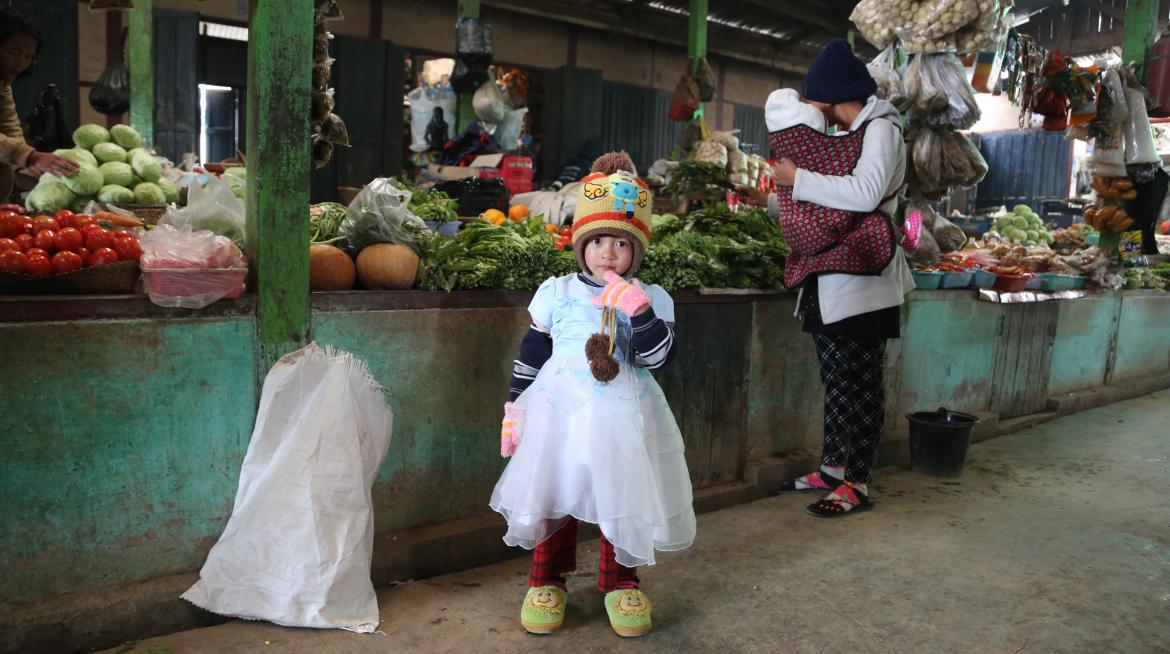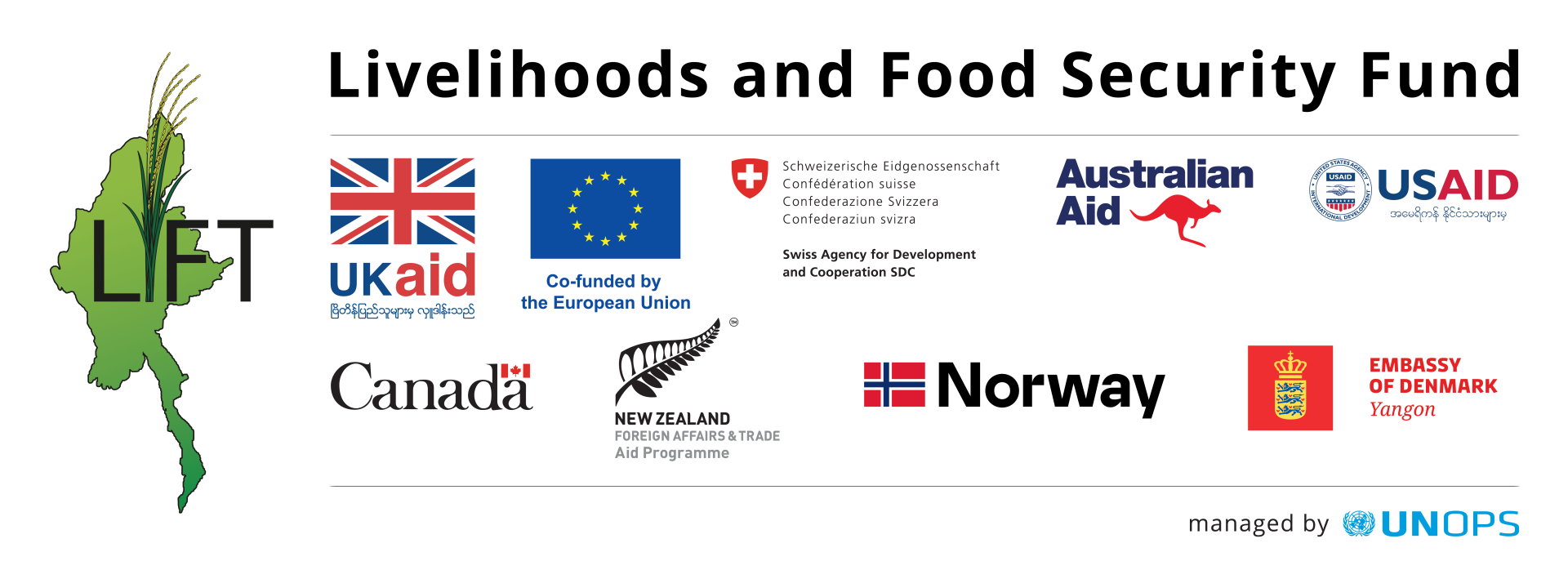
 Jennie Hilton is a Public Health Nutritionist who has worked across Africa and Asia on both nutrition sensitive and nutrition specific programme design, implementation, research and advocacy.
Jennie Hilton is a Public Health Nutritionist who has worked across Africa and Asia on both nutrition sensitive and nutrition specific programme design, implementation, research and advocacy.
She has spent the last six years focusing on raising the profile of nutrition issues in Myanmar, specifically on nutrition sensitive food security programmes, social protection, maternity cash transfers and the cross sector efforts needed for effective impact on under nutrition. She has worked for a number of development institutions in Myanmar including Save the Children and UNICEF, most recently supporting the government with the integration of treatment of malnutrition within the health service.
In this blog, Jennie investigates how a reduction in stunting has been successfully achieved in other parts of the world, and shares the key measures taken by governments and communities that led to that success.
---------------------------------------------------------------------------------------------------------------------------------------------------------------------------------------------------------------------
In Myanmar as many as 35% of children under the age of 5 are stunted, or very short for their age, which means that 1.8 million children are not reaching their full potential. LIFT promotes reducing stunting as a way to build the resilience of Myanmar’s people, and to reduce the losses to the economy associated with stunting. These losses are estimated at $5 billion a year.
Global evidence shows that success in reducing the number of stunted children can take place by coordinating proven interventions, against a backdrop of economic growth and poverty reduction1.
Myanmar is entering a period of unprecented economic growth - the time is right to tackle stunting.
Progress towards reducing stunting will come with ensuring access to direct nutrition services and nutrition sensitive interventions, through a combination of strong well-resourced community facilities, adequate supplies system and coordinated leadership, collaborating across government sectors and civil society alike.
| Stunting is when a child is too short for his/her age, indicating chronic undernutrition | |
|---|---|
| Causes | Consequences |
|
|
Using exampels from other countries, here are five proven interventions that reduce stunting:
1. Community Action
- In Maharashtra, India, the prevalence of stunting was reduced by 16% in seven years through delivering proven community level interventions (see box 2) in a focused and equal way2, equipping frontline health workers to deliver nutrition services and behaviour change communication activities. Empowering and supporting people to work horizontally across sectors that usually operate vertically, for example hospital based and public health workers coordinating efforts or midwives providing support and guidance within a school3.
- Global evidence has proven which interventions work, so now we need to adequately train and resource people in the community aswell as the decision makers to plan and manage activities which aim to achieve better nutrition for all.
- Scaling-up interventions such as food fortification to improve diet quality and maternity cash transfer programmes to reduce financial barriers to good nutrition4 should be promoted in addition to communit based actions.
2. A reduction in stunting doesn’t happen with only one activity – a package of interventions is needed:
- Bangladesh has reduced stunting by 1.4% a year since 1997: the key drivers of this are improvements in household assets, parental education, sanitation coverage, health care use, including nutrition services5.
- Coordinated, concentrated efforts to address the immediate causes such as illness and food intake as well as underlying causes access to quality health care, education and poverty reduction are essential, the interventions addressing stunting have to be as interlinked and varied as the causes.
The causes of stunting are not linear, so the response to stunting should not be linear!
|
Box 2: Proven Interventions for Reducing Stunting |
|---|
|
3. Policy Development and Legislation
- Vietnam has extended maternity leave to six months and banned the advertising of breast-milk substitutes, which are known to cause a decrease in exclusive breastfeeding rates.
- This legislative change is reinforced by public awareness campaigns to promote key messages and give credibility to the work of health workers6.
- The success of this legislative change will now depend on community level support to mothers and their families as well as strong leadership to ensure that it is enforced and monitored.
4. Committed Leadership
- Brazil has seen a reduction in stunting from 37 per cent to 7 per cent in 30 years and an increase in the median length of time breastfeeding from 2.5 months to 14 months7.
- Presidential vision, commitment and leadership has prioritised nutrition-related actions across multiple sectors to increase access to maternal and child nutrition services, instigate policy level change (a strongly enforced International Code of Marketing of Breast-milk Substitutes and 6 month maternity leave) to create an enabling environment which supports women to breastfeed8.
- National, sub-national and municipal governments include hunger, food and nutrition security amongst their top priorities with adequate budget and institutional support to implement the public programmes9.
5. Maternity Cash Transfers
- In Mexico, a cash transfer combined with nutrition and health education, micronutrient supplementation reduced stunting in under 36 month olds by 10 per cent10. The package of activities led to increased knowledge and consumption of a more diverse diet.
- Cash transfers can be used to purchase nutrient dense foods during pregnancy, lactation and complementary feeding stage, supplement income and increase health service access. In addition it stimulates local markets and economy to improve the availability of nutritious food, and empowers women through resource control11.
Key lessons learnt from the global experience of Maternal Cash Transfers:
- Transfers should be underpinned by broad coverage and long-term commitment.
- Transfers should be made as part of an available package of nutrition services.
- The amount of transfer should reflect the cost of a nutritious diet.
- The implementation of a transfer programme requires coordination across all relevant departments.
References:
1 Improving Child Nutrition, The achievable imperative for global progress, UNICEF 2013
2 POSHAN, IFPRI, Delivering for Nutrition in Madhya Pradesh: Insights from a Study on the State of Essential Nutrition Interventions, 2015
3 Bhutta ZA, Das JK, Rizvi A, et al, The Lancet Nutrition Interventions Review be done and at what cost? Lancet doi.org/10.1016/S0140-6736(13)60996
4 Global Nutrition Report 2014
5 Ensuring nutrition benefits in a vibrant economy: Alive and Thrives approach and results in Viet Nam, 2014
6 Global Nutrition Report 2014
7 Global Nutrition Report 2014
8 Effective Public Policies and Active Citizenship – Brazil’s experience of building a Food and Nutrition System, 2012
9 Leroy J.L.; M. Ruel and E. Verhofstadta (2009). “The impact of conditional cash transfer programmes on child nutrition: a review of evidence using a programme theory framework”. Journal of Development Effectiveness
10 Feasibility Study: Technical options to implement a universal maternal child cash transfer in Myanmar, IGC, Save the Children, UNICEF, August 2015


